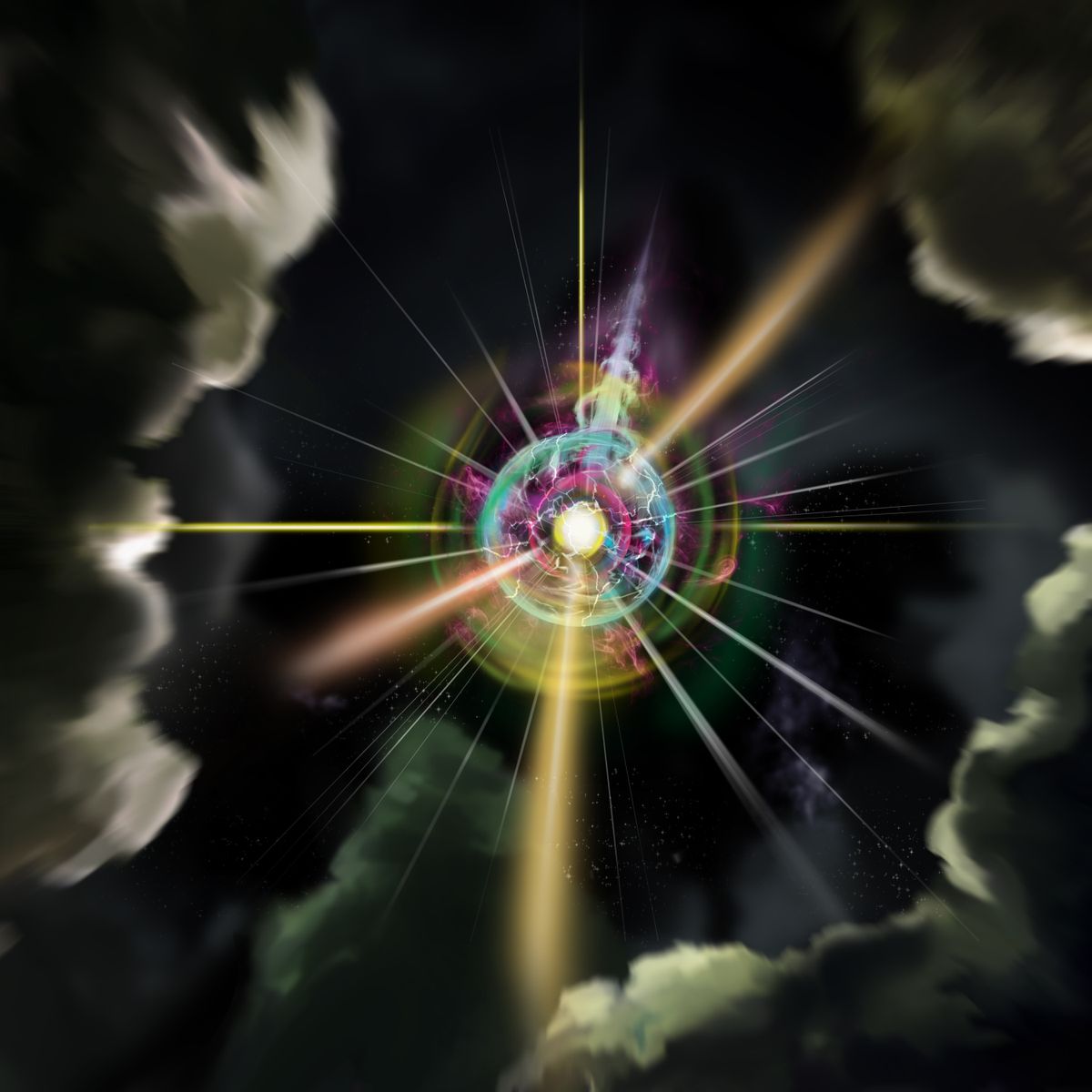One year ago this month, a physics lab in Amherst, Mass. came the closest yet to something physicists have been chasing since it was proposed in 1931—a magnetic monopole, an entity containing pure magnetic "charge" like an electron contains pure electric charge. The researchers have made the first so-called “Dirac monopole.” (The name comes from the physicist Paul A.M. Dirac, who described monopoles interacting with a quantum field, which is what the Amherst experiment was the first to do.)
Despite some sensationalistic media coverage that might have suggested otherwise, no one saw an actual particle that carried its own magnetic “charge.” Natural magnetic monopoles, whose existence if confirmed would have the benefit of explaining why electric charge is quantized, have still never been observed.
Instead what Amherst College physics professor David Hall and his postdoctoral researcher Michael Ray, created was an analog of a magnetic monopole in a collection of ultracold cloud of rubidium atoms known as a Bose-Einstein condensate. Consider their quasi-magnetic monopole, Hall says, as being a little like an electron “hole” in a semiconductor. In a lattice of atoms like doped silicon, the absence of an electron behaves much like a particle itself, propagating down the lattice as if it were the positively-charged twin of the electron. And of course holes aren’t actual particles. So, neither, are these quantum monopoles.
“We’ve created a magnetic monopole, but it’s just not in a magnetic field that a compass would respond to,” Hall says. “It’s a different field, a synthetic field or an emergent field, which we actually have a lot of control over.” An actual magnetic monopole particle would have two important properties—a quantum wavefunction describing the probability that it would be found in any point in space—and the magnetic field the particle generates. The Amherst monopole's "wavefunction" is just the density of the Bose-Einstein condensate. The probability density of a monopole particle's quantum state, in other words, is directly analogous in this system to the physical density of condensate. Following the experiment's analogy, then, the magnetic field of the "monopole" is represented by the orientation of atomic spins in the condensate. Thus both quantum and magnetic fields of the monopole analogue are found in this experiment, making it an attractive medium for further study and perhaps one day the capture and study of a real, honest-to-goodness magnetic monopole particle.
To create the condensate, Hall and Ray as well as the recently graduated Amherst student Saugat Kandel worked in collaboration with a team of Finnish researchers to laser-cool and magnetically-cool a cloud of rubidium atoms in their basement lab on the Amherst College campus.
They did it again for IEEE Spectrum last week [see video].
In one atomic trap they cooled the rubidium atoms down to microKelvins, millionths of degrees above absolute zero. Then shuttling the cooled cloud down a tube a meter or so away to a second trap, they further cooled the atoms by evaporation—shunting away all but the stillest of atoms in their increasingly frigid cloud. The overall effect, then, was to create a cloud that was 10 to 100 billionths of degrees above absolute zero—nanokelvins, in other words.
And at this temperature nature behaves quantum mechanically, even in the macroscopic realm. The Bose-Einstein Condensates, subject of the 2001 Physics Nobel Prize, can be manipulated and moved around with zero viscosity, a property called superfluidity.
Creating the “monopole,” from the condensate, involves a few extra steps they couldn’t show us. Hall says a powerful infrared laser is turned on to trap the condensate cloud. (The tool is a familiar one, called optical tweezers.) Then the magnetic field that once kept the cloud in place is free to manipulate the condensate.
And it is this magnetic field, that can finally knead, twist and bend its extremely supple subject, the condensate, so that it can simulate the presence of a “particle” of magnetic charge in its midst. [See the other video.]
Jonathan Morris, visiting assistant professor of physics at Xavier University in Cincinnati, described in IEEE Spectrum in 2013 his own group’s work creating quasi-magnetic monopoles in atomic networks of linked spins called “spin ices.” Morris says the qualifier “quasi” is important to stress in both discoveries.
“I doubt that particle physicists will consider these as fundamental magnetic monopole particles and they will continue in their search for such objects,” Morris told IEEE Spectrum’s Rachel Courtland. “The authors of this new study distinguish between their emergent magnetic monopole and the magnetic monopole particle by calling the latter a ‘natural magnetic monopole’ just as we distinguished between the spin-ice monopoles by saying that we had entities that ‘resembled magnetic monopoles,’" he says.
[The spin-ice monopoles are explained in this video.]
To Hall, the Bose-Einstein condensate's quantum properties are the reason his group's experiment is a noteworthy complement to previous groups' ersatz monopoles. "We have access to the analog of the electronic wavefunction," Hall says. "That’s something that no other system has. So we can study the analog of the electron-monopole interaction—how the system behaves once we’re done creating it." Moreover, he says, "If you think of our condensate/superfluid as a kind of 'monopole detector' then of course we might learn more about how to efficiently detect natural magnetic monopoles, or what their signatures might be."
This article was updated on 19 February 2014.
Margo Anderson is the news manager at IEEE Spectrum. She has a bachelor’s degree in physics and a master’s degree in astrophysics.



